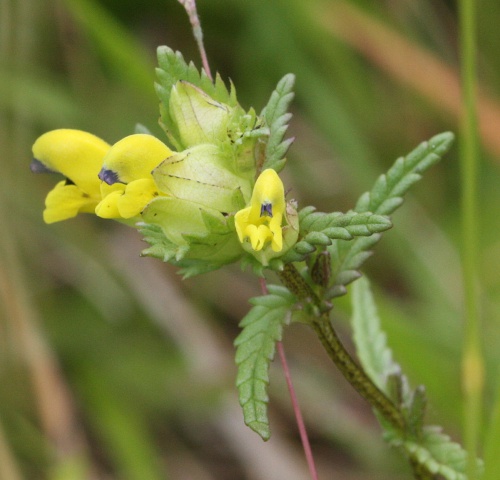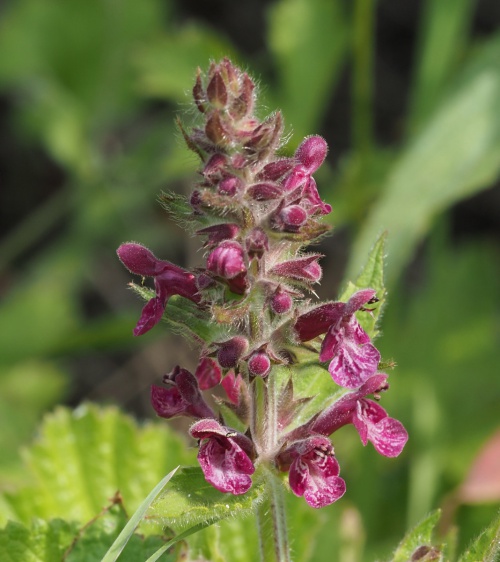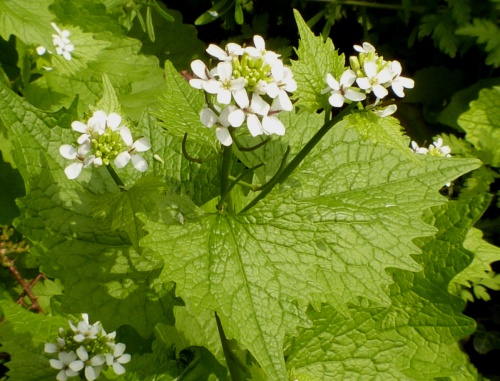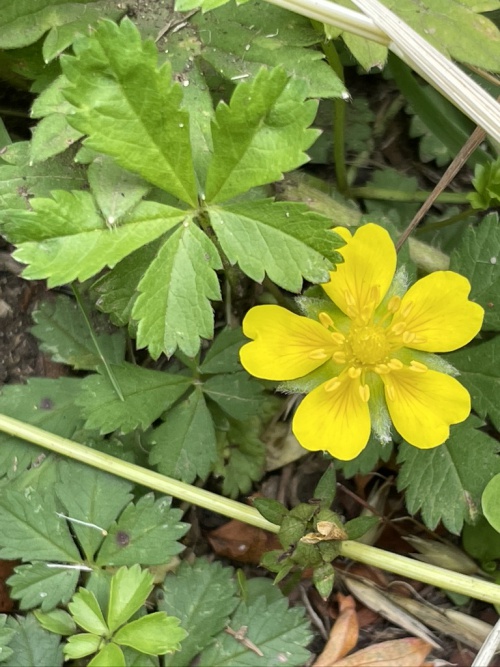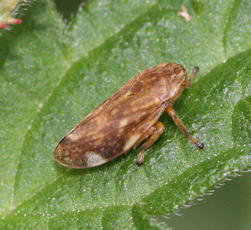
This verge is being managed to benefit wildlife. The wildflowers and grasses are allowed to bloom and a few additional wildflower species introduced. Here are some of the wildflowers and other wildlife species that have been found here. To see a full list and get up to date with the verge project, visit NatureSpot's Wild Place feature page for this verge. Click on any header to visit the NatureSpot page for that species to find out more.
Yellow-rattle
This attractive plant is a parasite! Its roots attach to those of nearby grasses to feed off their nutrients, reducing their vigour thereby making more room for other flowers. Because of this it is often seeded into new meadows. By July, the seeds are held in paper-thin capsules where they rattle in the breeze. It is annual and requires exposure to winter frosts for the seeds to germinate.
How to ID: It grows to 40cm, has yellow flowers protruding from a capsule. Leaves are serrated in opposite pairs.
Where to see it: Meadows, verges.
Similar species: None.
Oxeye Daisy
Swathes of this flower can turn verges into a white haze, swaying in the breeze. Commonly included in wildflower seed mixes, it is attractive to butterflies, bees and other pollinators.
How to ID: Typically grows to 60cm, flowering May-September. White petals with a yellow centre.
Where to see it: Verges, established meadows.
Similar species: Very occasionally, Shasta Daisy escapes from garden and looks similar.
Hedge Woundwort
A handsome plant found in shaded habitats and a strong favourite of bumblebees.
How to ID: Dark purple/red flowers in a spiked whorl, to 1.2m. The heart-shaped leaves have an unpleasant smell.
Where to see it: Hedgerows, ditches and shady places.
Similar species: Marsh Woundwort has pale pink flowers.
Garlic Mustard
Also known as 'Jack-by-the-hedge' and 'Hedge Garlic'. Fresh leaves and the flowers can be eaten. It is a biennial - taking two years to complete its life cycle. Flowers don't appear until its second year.
How to ID: Pale green, kidney-shaped toothed leaves, which smell of garlic when crushed. Clusters of small white flowers: To 1m tall.
Where to see it: Hedges, woodland margins, shady places - flowering April - June.
Similar species: None.
Creeping Cinquefoil
The name tells you a lot about this plant (if you speak French!). Cinquefoil means 5 leaved and it is certainly a creeper, sending out long runners. It is a very short plant so does best near paths and at the edges of verges.
How to ID: Yellow flowers and 5 leaflets spread in a circle.
Where to see it: Path edges, bare or disturbed ground.
Similar species: None.
Yorkshire-fog
A very soft grass - covered in fine hairs (its scientific name 'lanatus' means woolly). Supposedly named because from a distance the flowering grass looks like low-lying smoke, such as that from Yorkshire factories.
How to ID: Stems soft and hairy. The flowers have a pink tinge when fresh, getting more straw-coloured with age. Base of the stems have red stripes.
Where to see it: Most grassland habitats.
Similar species: Creeping Soft-grass has similar flowers but hairless stems (apart from the hairy joints).
Brimstone
The word 'butterfly' is believed to have come from this species - a 'butter-coloured fly'. It hibernates as an adult through the winter, its leaf-shaped outline helping it to hide in vegetation. Its caterpillars feed on the leaves of Buckthorn and Alder Buckthorn.
How to ID: Males are bright yellow, females are a paler whitish-green. Both have a leaf outline when at rest with wings together.
Where to see it: Anywhere, it is a great wanderer!
Similar species: None, though pale females can at first be mistaken for one of the 'white' butterflies.
Common Froghopper
You are probably more familiar with this true bug species in its juvenile form - 'cuckoo-spit'. The nymphs produce the frothy white foam from plant sap to provide cover and protection. The adult is perhaps the most variable insect in Britain, with many different colour forms and patterns - see here.
How to ID: 5-7mm. Easiest identified from cuckoo-spit. Adults 5-7mm, very variable shades of brown with spots and stripes, but all with the same overall shape.
Where to see it: On leaves and stems of plants (it feeds on many species).
Similar species: Other froghoppers.
Chrysoteuchia culmella
These common moths are conjurers - flying in plain sight then 'disappearing'. They land on grass stalks and hug the stem with folded wings so are hard to see.
How to ID: Body length 12mm. Usually resting on plant stems. Wings with two angled cross-lines and a metallic golden fringe.
Where to see it: Any uncut grassland.
Similar species: There are several other 'grass moths' but all with different wing patterns.
Nursery Web Spider
This spider doesn't build a web but chases down prey. The female builds a silken tent amongst grasses in which she lays her eggs and then looks after the young until they are mature enough to leave.
How to ID: Large spider (to 15mm). Orange-brown to grey. Slender with a pale mid-line. 'Tear' marks at the sides of its head.
Where to see it: Sunbathing amongst low vegetation.
Similar species: None.


